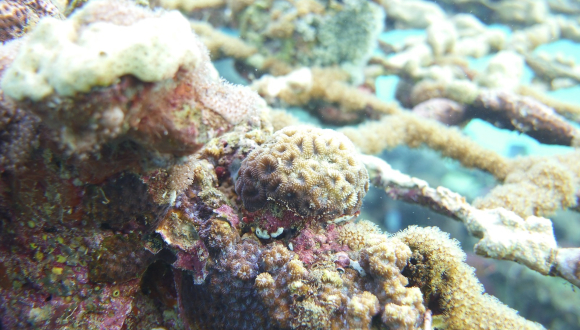TAU research finds antibiotics and laxatives in corals at a depth of 40 meters

Ten different pharmaceuticals detected in corals in the Gulf of Eilat
Support this researchA new study from Tel Aviv University (TAU) and the Steinhardt Museum of Natural History at the university detected traces of ten common medications in coral samples collected from both shallow and deep sites in the Gulf of Eilat. Sulfamethoxazole, an antibiotic used for respiratory and urinary tract infections, was found in as many as 93% of the sampled corals.
The study was led by Professor Noa Shenkar of the School of Zoology at the George S. Wise Faculty of Life Sciences and the Steinhardt Museum, and her PhD student Gal Navon, in collaboration with the Hydrochemistry laboratory led by Professor Dror Avisar at TAU’s Porter School of the Environment and Earth Sciences. The results were published in an article dated November 1, 2024, in the journal Environmental Pollution.
“In this first-of-its-kind study, we conducted a large-scale investigation for detection of pharmaceuticals in corals,” says Professor Shenkar. “We sampled 96 reef-building stony corals representing two types, Acropora sp. and Favites sp., in shallow sites as well as deeper sites beyond the limits of recreational diving. We were surprised to find an extensive presence of medications even in the deep-water corals which usually escape contaminations affecting corals in shallower areas.”
The researchers obtained a list of the most commonly used pharmaceuticals in Israel from Clalit Health Services. Testing for 18 of these compounds, they detected ten of them in the coral samples. Not a single sample, retrieved from either shallow or deep water, was found to be drug-free. The ten pharmaceuticals found in the corals belonged to different categories: antibiotics, blood pressure medications, antiplatelet agents, calcium channel blockers, laxatives, proton pump inhibitors, statins, and antidepressants.
“These medications are taken by humans to affect a certain receptor or biological pathway, and they can also impact other organisms,” explains Professor Shenkar. “Previous studies, conducted by both our lab and others, have revealed many examples of this negative impact: estrogen from birth control contraceptive pills induces female features in male fish, impairing reproduction in certain species; Prozac makes some crabs aggressive and reckless; and antidepressants damage the memory and learning abilities of squids. There is no reason to believe that corals should be immune to such effects. For instance, if our pharmaceuticals should disrupt the spawning synchrony of coral populations, it would take us a long time to notice the problem, and when we do, it might be too late.”
“Stony corals build coral reefs, and the types we studied are very common in the Gulf of Eilat,” Navon adds. “Coral reefs are a cornerstone of marine biodiversity. They provide food, shelter, and spawning sites to numerous species, and support the human fishing and tourism industries. Today this delicate ecosystem is under pressure as a result of climate change, pollution, and overfishing. The presence of pharmaceuticals in coral tissues adds another layer of concern, indicating that human activities even contaminate faraway marine environments.”
“Clearly these medications save lives, and we have no intention of requesting people to reduce their use,” Professor Shenkar concludes. “However, we must develop new sewage treatment methods that can effectively handle pharmaceutical compounds. Also, each of us must dispose of old medications in ways that do not harm the environment. Ultimately these drugs come back to us. I know people who avoid medications, but when they eat a fish, they might unknowingly consume a ‘cocktail’ of drug residues absorbed by the fish from the marine environment.”